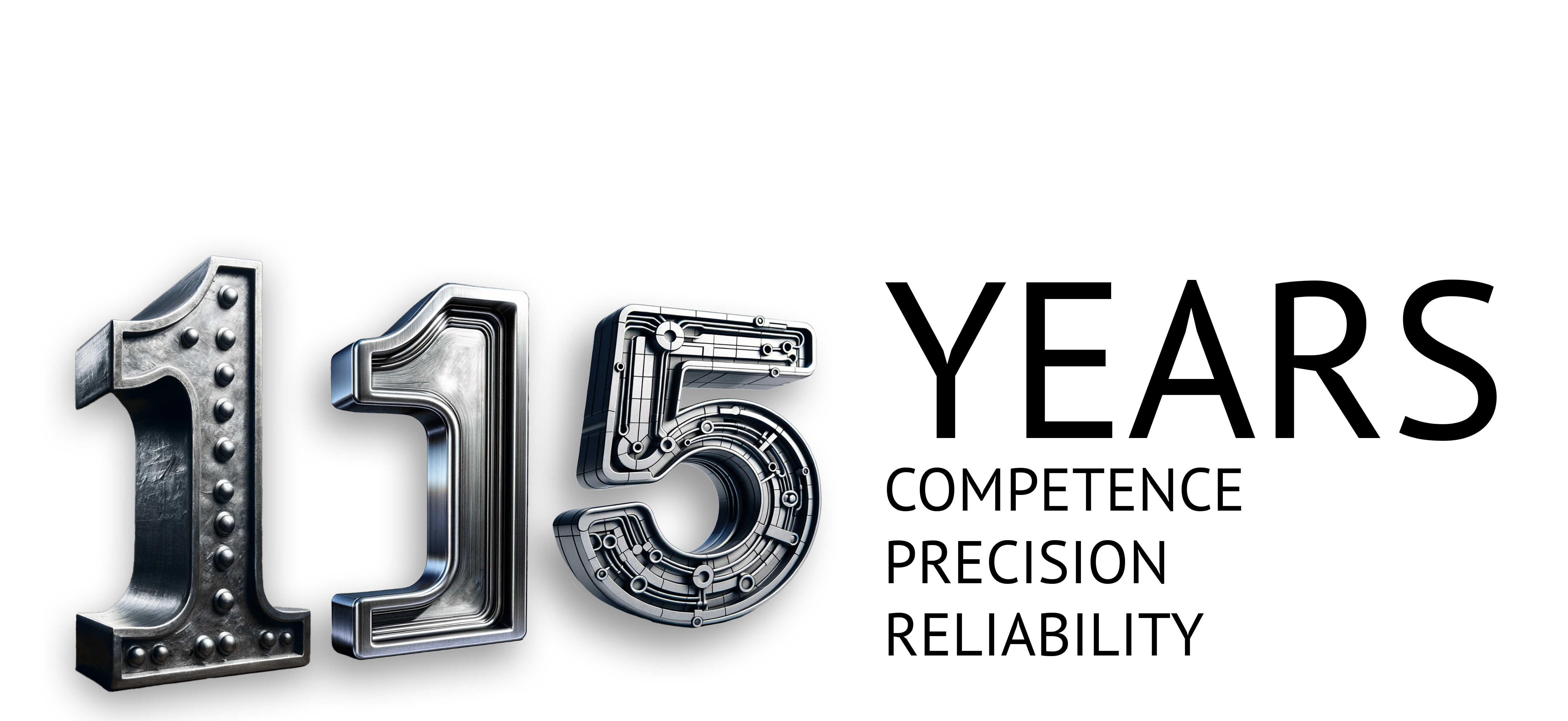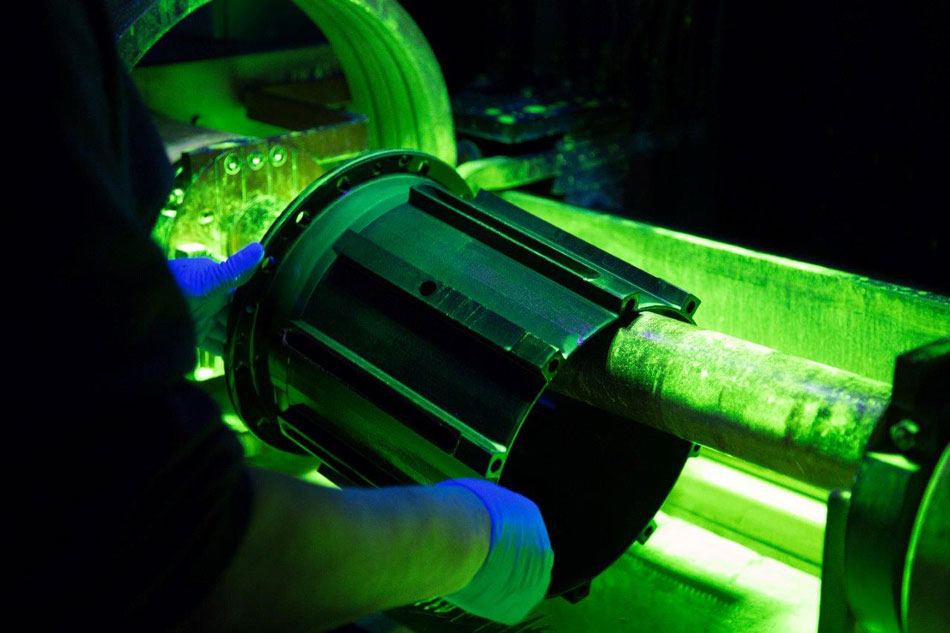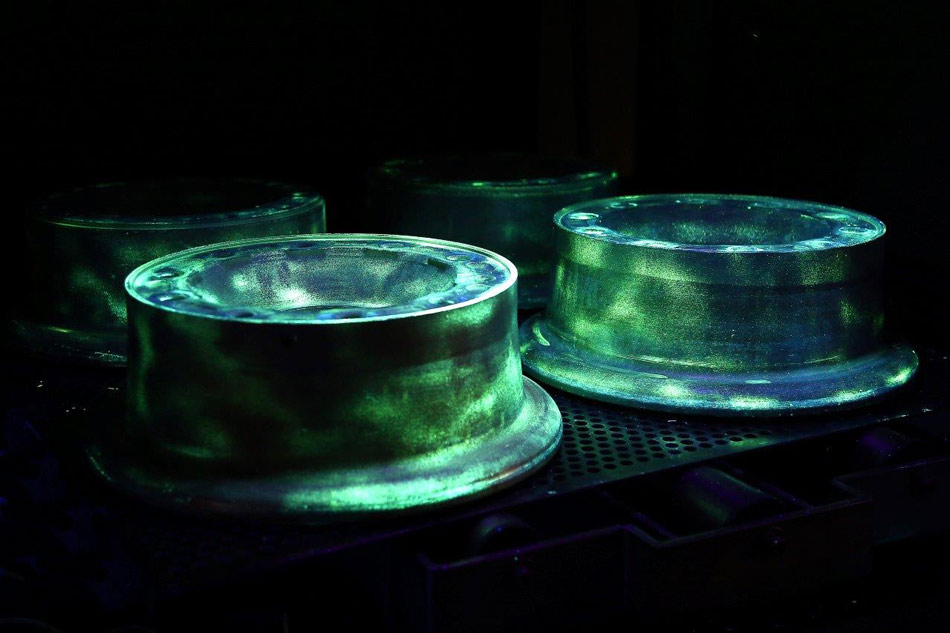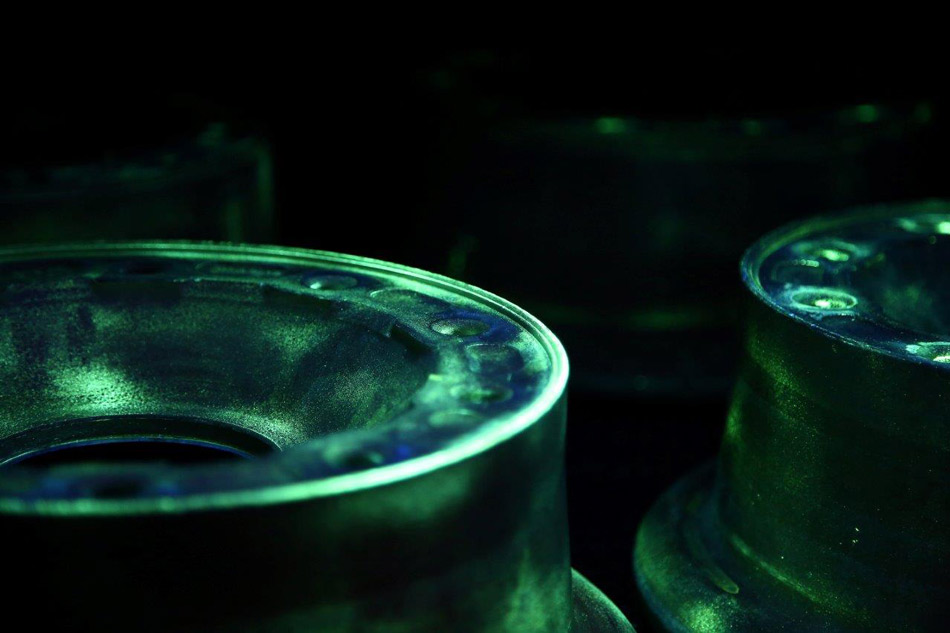During the machining of metal, for example during turning, milling, drilling or heat treatment, cracks can occur due to stresses in the microstructure. Particularly under demanding loads, the smallest damage in components expands over time and can lead to total failure of the component. In the case of safety-relevant parts subjected to extreme to maximum loads, such as aircraft turbines, brake discs, axles or steering parts, the consequences are life-threatening. Crack detection is therefore an important part of quality assurance, both for individual parts and for series. In many industries, for example in the automotive and aerospace industries, standards are defined for the inspection of components prior to installation.
A distinction is made between destructive and non-destructive testing of materials such as stainless steel or aluminum:
By its very nature, destructive crack testing can only take random samples and causes a lot of rejects. There are several options for non-destructive crack testing, depending on the material and the objective:
- the precise visual inspection using magnifying glasses, microscopes or endoscopes, which also finds fine cracks in the material surface,
- the dye penetrant inspection, which makes cracks and pores in the metal, for example stainless steel or aluminum, visible,
- eddy current crack detection, which can be used for rotationally symmetrical components with electrical conductivity, and
- crack detection using thermography, ultrasound or magnetic powder.
Do you have any questions? We will be happy to support you with our comprehensive know-how.
Free problem analysis from our experts
This email address is being protected from spambots. You need JavaScript enabled to view it.
This email address is being protected from spambots. You need JavaScript enabled to view it.




